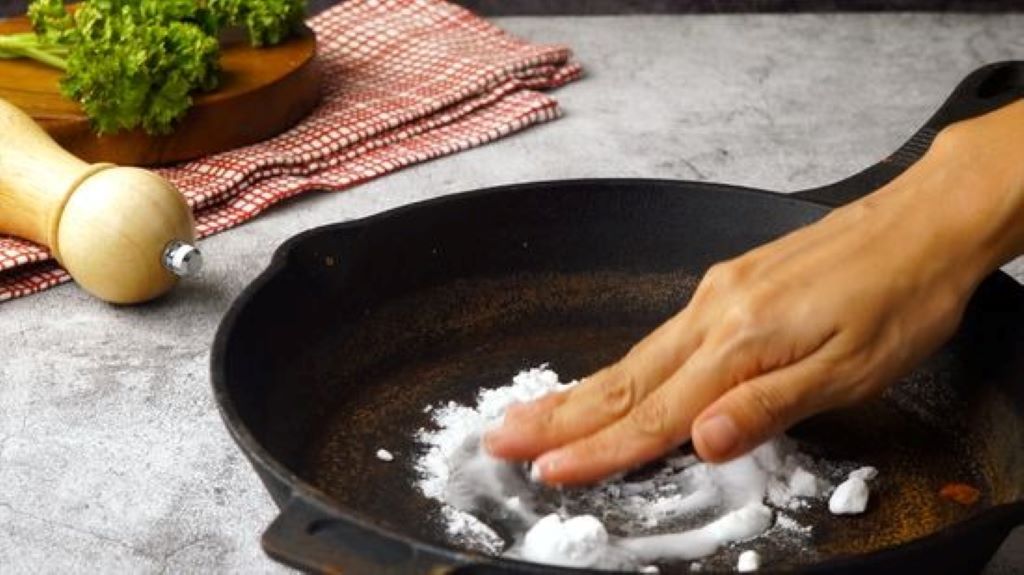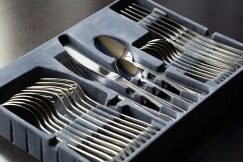Few things in the kitchen evoke as much nostalgia—and cooking potential—as a cast iron skillet or pan. Renowned for their durability, heat retention, and ability to develop a natural non-stick surface, cast iron cookware pieces are often cherished family heirlooms or budget-friendly staples for home chefs. However, one common curse that plagues all cast iron lovers is rust. Whether due to improper cleaning, poor storage, or prolonged moisture exposure, rust on cast iron can be both unsightly and detrimental to its performance.
If you’ve found your trusty skillet or pot sporting a stubborn rust layer, don’t panic. Removing rust from cast iron is absolutely doable at home with simple tools and techniques. In this comprehensive guide, we’ll walk you through proven methods to restore your cast iron cookware to its former glory while preserving its seasoning and functionality. Plus, we’ll share valuable tips on preventing rust in the future, so your cast iron lasts a lifetime.
Why Cast Iron Rusts and What You Need to Know
Cast iron is an iron alloy containing carbon and sometimes trace elements. It’s porous and prone to reacting with moisture and oxygen to form iron oxide—rust. Once rust forms, it can strip away the seasoned layer (the smooth, oily coating that makes cast iron non-stick) and create pits or rough texture, which can impact cooking performance and food safety.
Common causes of rust on cast iron:
- Leaving cast iron wet or damp after washing
- Storing in humid environments or without adequate airflow
- Cooking acidic foods that can break down the seasoning
- Using harsh detergents or scrubbing pads that remove protective seasoning
- Long-term disuse without regular maintenance
Understanding why rust happens helps you avoid it next time while restoring the pan effectively.
Signs of Rust on Cast Iron
Before diving into rust removal, it’s important to identify rust on your cookware:
- Color: Rust appears as reddish-brown or orange patches—sometimes flaky or powdery.
- Texture: The surface feels rough or gritty instead of smooth and oily.
- Performance Changes: Food starts sticking easily, or cooking becomes uneven due to pitting.
Even if rust is only superficial, cleaning it off promptly will prevent it from spreading into damaging pits.
Step-by-Step Guide: How to Remove Rust from Cast Iron
What You’ll Need
- Steel wool, wire brush, or scrubbing pad (non-metallic for light rust)
- Mild dish soap (use sparingly)
- White vinegar
- Baking soda (optional)
- Cooking oil (vegetable oil, flaxseed oil, or shortening)
- Gloves (optional, for protection)
- Clean cloth or paper towels
- Aluminum foil (optional)
Method 1: Using Vinegar Soak (Best for Heavy Rust)
White vinegar is acidic enough to dissolve rust but gentle enough not to damage cast iron if used properly. Here’s how to use it:
- Mix vinegar and water: Create a 50/50 solution of white vinegar and water in a container large enough to submerge the rusted cast iron piece.
- Submerge the cookware: Place your cast iron pan in the solution. Ensure it’s fully covered.
- Soak for up to 8 hours: Check the cookware every hour or two. Do not exceed 8 hours to avoid damaging the cast iron itself.
- Scrub off loosened rust: Remove the pan from vinegar, rinse, and use steel wool or a scrubbing pad to scrub away loosened rust.
- Repeat if necessary: For persistent rust spots, repeat the soak and scrub step once more.
- Neutralize acidity: Rinse the pan thoroughly and sprinkle baking soda on its surface; scrub gently. Baking soda neutralizes any remaining vinegar.
- Dry immediately: Wipe with a dry towel and heat on stove or oven to evaporate moisture.
Method 2: Manual Scrubbing for Light Rust
If rust is minimal, heavy soaking may be overkill.
- Use steel wool or a wire brush: Scrub the affected areas vigorously until rust flakes off.
- Wash with mild soap (optional): Traditionally, soap is avoided, but a little dish soap can help remove rust particulates here. Rinse well.
- Dry thoroughly and re-season: Dry and apply a thin layer of oil, then heat in the oven to restore seasoning.
Method 3: Baking Soda Paste for Gentle Rust Removal
For delicate rust spots or cookware with a seasoned surface you don’t want to damage:
- Make a thick paste with baking soda and water.
- Apply to rust spots and scrub gently with a sponge or soft brush.
- Rinse and dry well.
- Oil and re-season if needed.
How to Re-Season Your Cast Iron After Rust Removal
Removing rust strips away the seasoning that protects your pan. Seasoning involves coating cast iron with a thin layer of oil, then baking it to create a durable layer.
Steps to re-season:
- Preheat your oven to 450°F (232°C).
- Apply a thin, even layer of cooking oil over the entire cookware, inside and out.
- Wipe off excess oil with a paper towel—your pan should look barely glossy.
- Place the pan upside down in the oven on the middle rack. Place foil on the lower rack to catch drips.
- Bake for 1 hour.
- Turn off the oven and let the pan cool inside.
- Repeat 2-3 times for a stronger seasoning layer.
Tips to Prevent Rust on Cast Iron
- Dry immediately and thoroughly: After washing, towel dry and place the pan on low heat to evaporate moisture.
- Avoid soaking: Never leave cast iron submerged in water.
- Apply a thin oil layer after each use: This maintains the seasoning and creates a moisture barrier.
- Store in a dry place: Use a paper towel inside the pan to absorb moisture.
- Avoid harsh soaps and metal scrubbers: Use mild detergents and non-abrasive tools to preserve seasoning.
- Cook frequently: Regular use keeps seasoning robust and less prone to rust.
Frequently Asked Questions (FAQs)
Q1: Can rusted cast iron make food unsafe?
Light rust is generally not harmful but can affect flavor and texture. Heavy rust might cause ingestion of rust particles, which is undesirable. Removing rust quickly is best for safety and flavor.
Q2: Can I use bleach or chemical rust removers on cast iron?
No. Bleach and strong chemical rust removers can damage the cast iron surface and remove seasoning. Stick to natural and mild treatments like vinegar and baking soda.
Q3: Will removing rust damage cast iron?
If done properly, rust removal will restore—not damage—your cast iron. Over-soaking vinegar or excessive scraping can harm seasoning but won’t ruin the cookware.
Q4: How often should I season my cast iron?
Once every few months or whenever you see dullness, wear, or sticking. Frequent cooking with oil also naturally seasons your pan.
Conclusion: Bring Your Cast Iron Back to Life Today
Rust on cast iron doesn’t mean it’s time to toss your beloved pan. With the right method, a bit of elbow grease, and care, you can remove rust effectively and restore your cast iron cookware’s performance and beauty. Remember to re-season properly after rust removal and adopt preventative habits to keep your cookware rust-free for decades of delicious meals.
Related Topics:
Deck Design Inspirations to Transform Your Outdoor Space
The Questions to Ask When Building a Home





